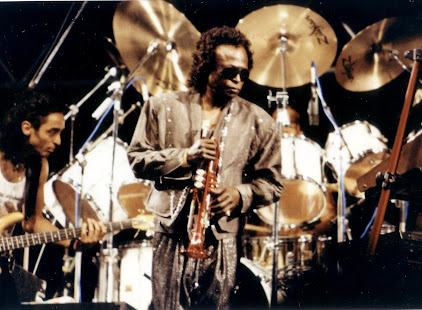Seeing Ourselves In Animals
Anthropomorphising animals is perhaps something that every society and individual has done at some point in time. Drawing from our own cultural and societal preconceptions, we readily attribute mental states, complex intentions and even personalities to a variety of species, such as the kindly elephant, the wise old owl in the classical West and the foolishly corrupt owl in India, the loyal dog and the untrustworthy fox. While observing their behaviour, we tend to view it as a simplified, cartoonish version of what humans feel, backed by motivations and emotions not unlike our own.
Watching anything which seems animate, whether another human, an animal or even a moving dot, activates large areas of our brain that are related to social cognition, simulation of another person's mental state, or empathy and other emotional states. Thus, anthropomorphism is a powerful social thought process in the human brain, and one of the ways in which humans interact with and make sense of their natural environment.
In a social context, it often comes backed by myths and legends accreted over generations. Right from birth, humans tend to be biophilic or fascinated by the natural world, and the process of attributing incentives and motivations to other organisms helps us understand the world we share with them, and to relate to them better.
For example, the poet William Wordsworth mocked a man who refused to anthropomorphise, as for him "A primrose by a river’s brim / A yellow primrose was to him / And it was nothing more." His inability to recognise some inherent relation between the flower and himself prevents him from understanding the greater structure of the biome that they both shared. In fact, the man is instinctively feared by all, and is only redeemed, later on in the poem, with the help of an anthropomorphised ass.
Anthropomorphism even has its scientific benefits. For example, on observing vertebrates like birds and fish, we tend to attribute to them complex social networks and cognition, unique behaviour patterns and even behaviours specific to individuals of each gender. While the sizes of their brains at first did not indicate that this was possible, more recent research has indicated that they too have complex neural structures for socialising.
However, the anthropomorphism of animals is not without its cognitive biases. As a rule, humans tend to relate more closely to those animals with which we share more characteristics or a closer bond, and avoid anthropomorphising animals which we eat. We are more likely, for example, to anthropomorphise hominids than other primates, we attribute personalities to cats and dogs more readily than to their wilder cousins, and more often than not, we struggle to relate to the animals that are slaughtered for meat.
Moreover, a lot of anthropomorphic thought is cultural. A study of British environmentalists' relation to the nature they strive to protect saw that, more often than not, they actually see natural objects as persons, and do not need to imagine or construct them as such. On the contrary, a similar study of the Nayaka hunter-gatherer society of South India showed that their understanding of other species was more relational, based on how things changed in relation to themselves.
Much of anthropomorphic thought is also fundamentally arbitrary, based on coincidental linkages between animal behaviour and human characteristics. For example, the American band Simon and Garfunkel mocked this tendency in their song 'At The Zoo,' which depicts a menagerie of creatures who seem all too human; for example, "Zebras are reactionaries / Antelopes are missionaries / Pigeons plot in secrecy / And hamsters turn on frequently." The problems with this arbitrariness arise, however, when it comes to policy decisions about conservation and protection of wildlife.
Humans tend to favour certain animals, called "charismatic megafauna," who we perceive as more cute, majestic or interesting than others, and hence more worthy of being conserved, even if conservation funding could be better used to preserve other species of greater taxonomic or ecological importance.
For example, the failure of the government of Spain to meet biodiversity targets in 2010 was attributed to an anthropomorphic bias in conservation efforts. Economic goals also play a crucial role, but at times these too may be linked to an inherent cognitive bias - for example, panda conservation is economically motivated by the number of tourists willing to pay to see the animals, but these tourists would probably not come if not for humans' intrinsic bias in favour of anthropomorphic animals like pandas.
These cognitive biases and their ecological ramifications have prompted many to suggest a linguistic and cognitive shift in how we deal with animals, to allow us to view them as beings that exist in their own right and not as projections of our own human existence. The author Robin Wall Kimmerer has written about how languages such as English lack a pronoun specifically for non-human living beings, leading us to either anthropomorphise them as 'he' or 'she,' or objectify them as 'it.' To promote the idea of these living beings existing in their own right, she advocates the use of alternative pronouns like 'ki' and 'kin', based on the Native American Anishinaabe language.
However, anthropomorphising animals is not necessarily wrong in the normative sense, as it is after all a natural cognitive process in humans, and the basis of much of our lore, folktales and understanding of ourselves and the natural world. It becomes problematic when we allow our anthropomorphism of certain species, and the cognitive biases associated with it, interfere in our conservation efforts and in the wider ecological balance.
Image credits: By Afrika Expeditionary Force - https://www.flickr.com/photos/afrikaforce/5155384054/in/photostream/, CC BY 2.0, https://commons.wikimedia.org/w/index.php?curid=14976848



I LOVE Robin Kimmerer's idea of using alternative pronouns for non-human living beings! Such a lovely idea!
ReplyDeleteI agree! :))
Delete